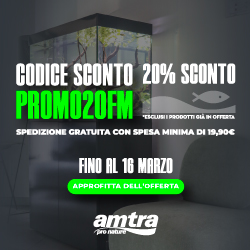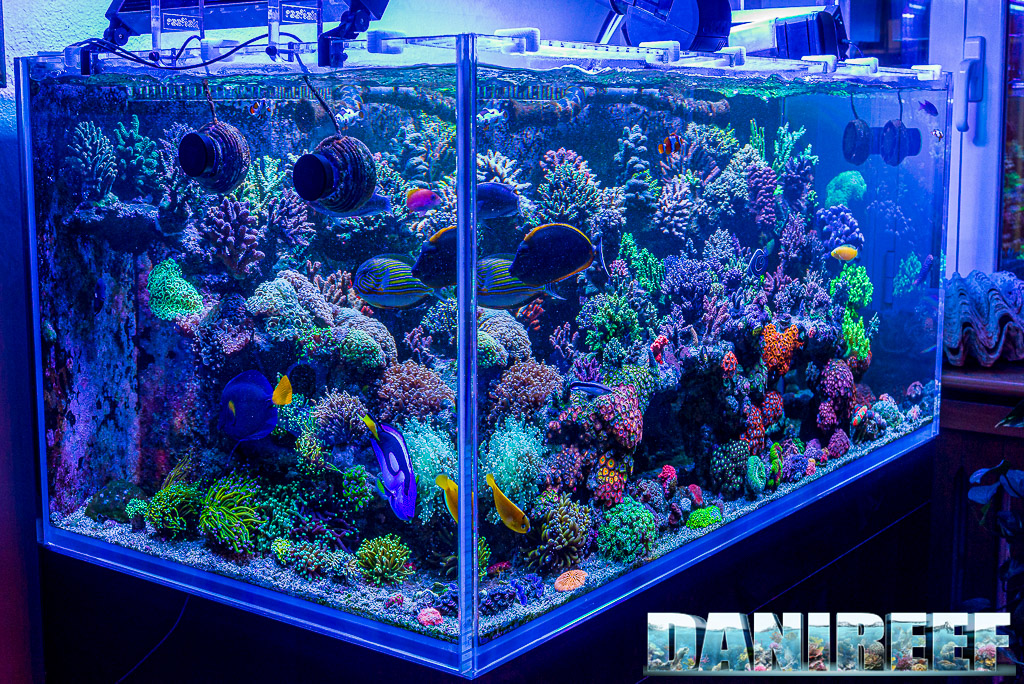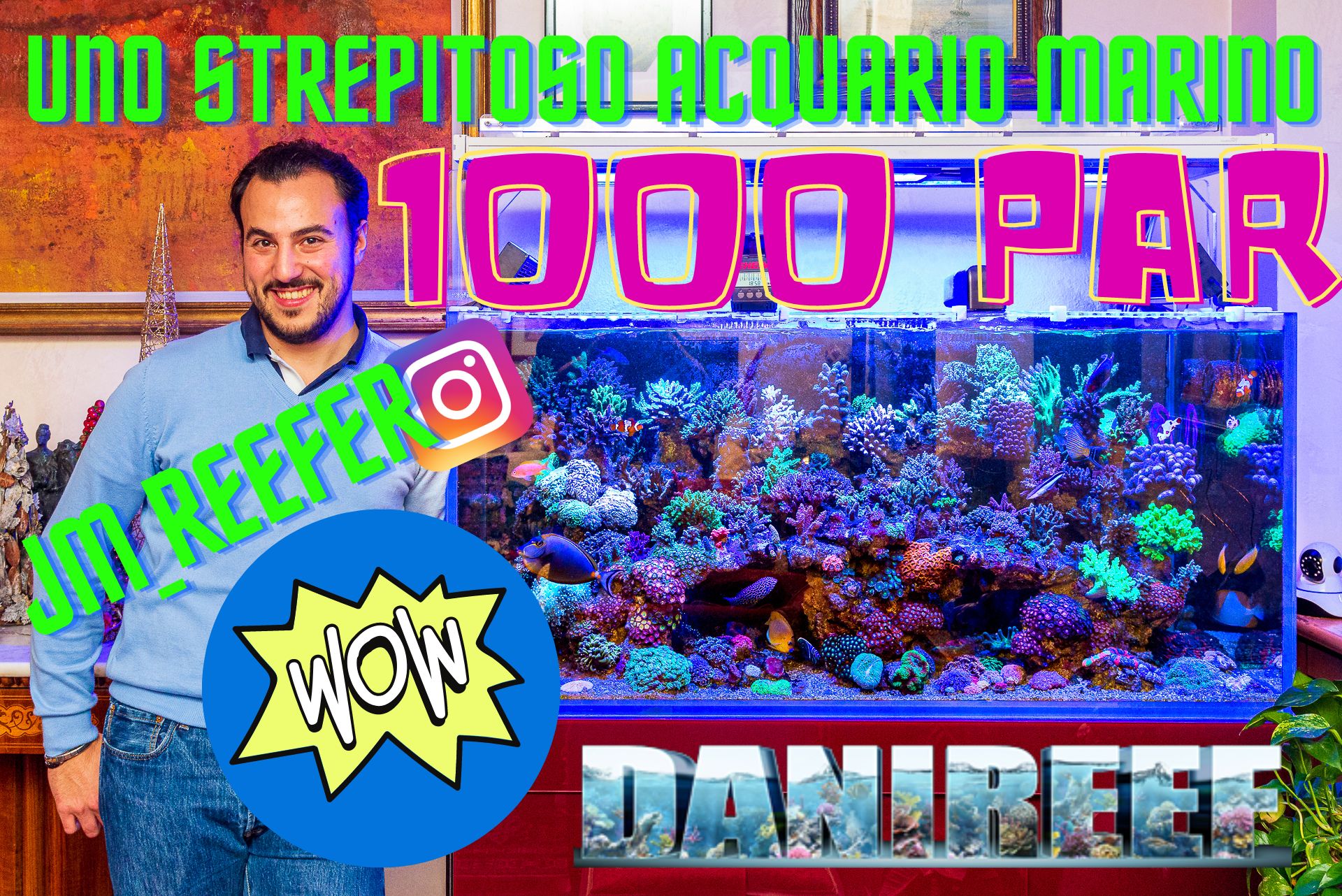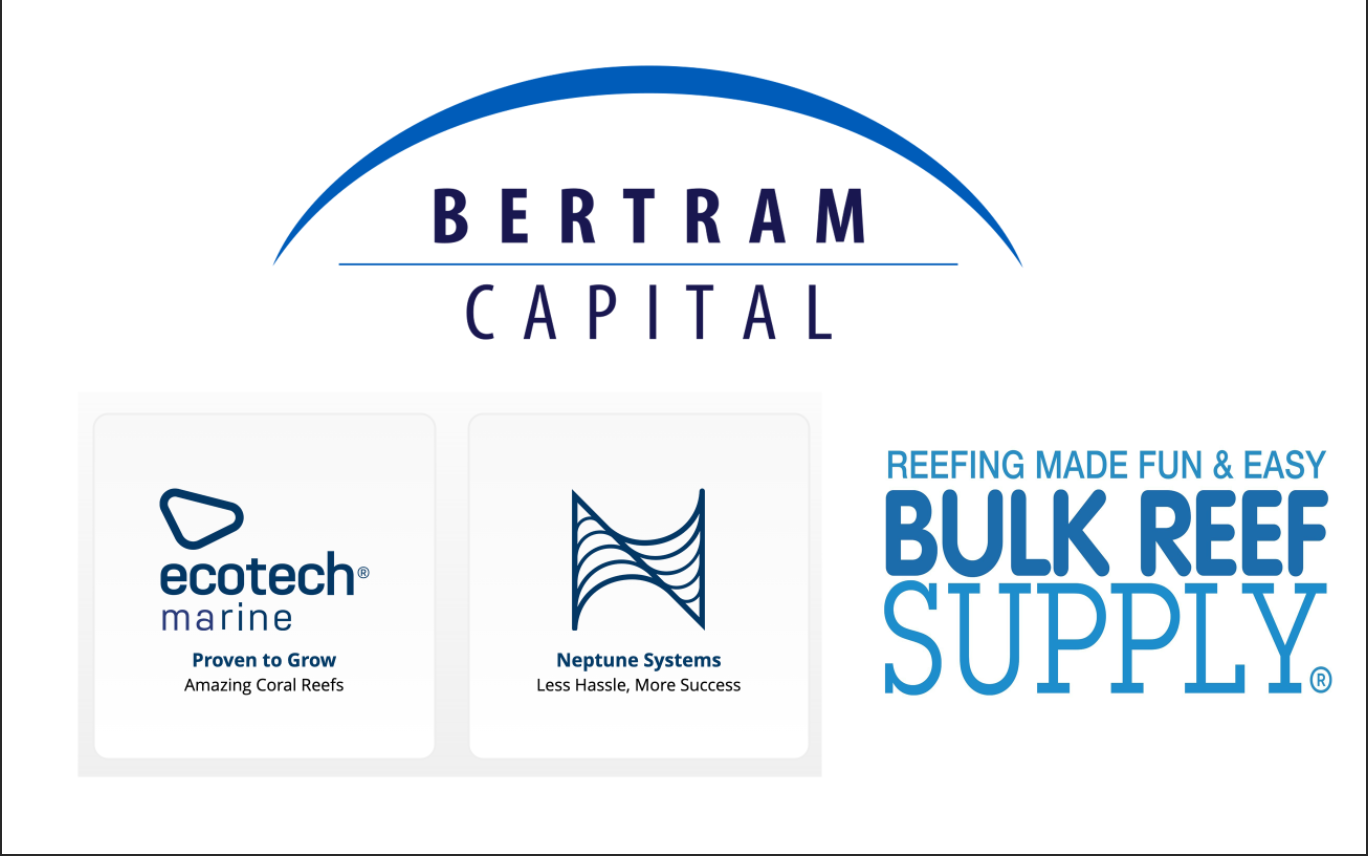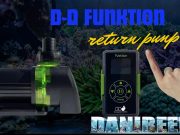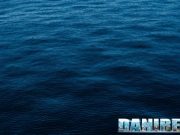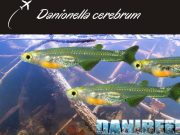When EcoTech Marine presented the new Vortech MP40 to the aquarium market, a new era began. This product was very nice and soon acquired a lot of interest. It quickly became the “king” of the pumps even before it started functioning. The pump has an external part which incorporates the motor of the pump, this finally crates a pump that almost not noticeable in the tank. At those times it was something incredible.
And today? After many years that the pump has been released on the market, no one has had the courage or the patents in order to develop something similar to it. So up to now it remains the only external magnetic drive pump available in the aquarium market. Still today it remains a dream for many aquarium hobbyists.
Now let’s look at it in detail starting from the technical specifications.Obviously the pump is electronic, in order to deliver maximum versatility. It is capable of delivering between a declared minimum of 3,800 liters per hour to a maximum of 12,100 liters per hour. The minimum energy consumption is of 9 watt when functioning at 3,800 liters, meanwhile the maximum energy consumption declared is of 28 watt. In absence of further data we can say that when the pump is operating at its maximum its efficiency is about 432 liters for every watt consumed. When comparing it to other pumps in the market from what is declared from the companies it appears to be less efficient compared to the Turbelle Stream 6105, placed at 458 liters for watt. Looking at it from another point of view, considering that the pump appears to be of 442,65 euro according to the price list, we can say that the economic efficiency is of 27 liters of water flow for every euro spent. Obviously included in the price is also the pump controller, which has to be bought separately from competitors which sell these types of pumps.
When looking with what the pump is equipped we can say that the MP40 is really equipped with everything, with a controller which is extraordinary.
When unwrapping the box we can see that the pump is divided into two parts, the wet side which is the part to insert inside the aquarium and the dry side which is the part outside of the tank with the engine of the pump, than the controller, the transformer and a manual sparse which allows you to download the full manual from internet.
A pump which has an external engine has many advantages and many disadvantages, let’s look at these together.
First of all, like we have previously stated the space it occupies inside the tank is minimal. Ecotech Marine states that now it’s possible to concentrate one’s sight on the corals rather than on the pumps.
The engine of the pump is on the exterior side of the pump, this means that it could possibly be subject to accidental falls, for this reason Ecotech Marine suggests to fix the power supply of the pump to the glass of the tank with adhesive cable that comes supplied with the pump. The nice thing of having an external engine is that there is no electric cable coming out of the tank and also the reassurance that water and electricity will never touch, which creates a safe condition for the person. However, the external engine does not permit a flexible positioning of the pump, this is because the pumps cannot be oriented and has to be placed in a position studied purposely for them. Unfortunately, it’s a noisy pump, it emits a sound that for some can be considered as disturbing, but we will analyze this matter later.
Another important aspect which should not be underestimated is that it does not emit heat inside the tank since the engine of the pump is outside. So during the summer the problem of cooling down the tank appears to be inferior, but in the winter there would be more need to warm the tank. Considering that 2 pumps like this, or equivalent, with a consumption of 30 watt for each one acts as a 10 watt heater when it remains on 24 hours.
Still tied to this subject there is the great advantage that once the pump is switched off from the multicontroller by pressing the right button, it takes just a moment to take it out of the tank and to clean it, without the need of cleaning the pump on the side of the tank or without the need of taking all the cables apart as it is often done with traditional pumps.
I have been using a VorTech pump in my tank from 2008 till 2010, with the exception of last year when I decided to insert two Tunze Stream 6105. But for the last 4 months I have decided to reinstall the VorTech pump in my system after inserting a second one. I believe that I can say that I know them pretty well, also because I have passed from the first generation controller to the one that is currently on the market and I really have been using them a lot.
The first problem one has to set forth when you have a pump like this one, which I consider a beauty just to keep in my hand, is the need of carefully positioning it in the aquarium in order to prevent that vibrations propagate on the glass making the vibrations sound loud.
The flow between wet-side and dry side
The first time it can seem difficult, and the result obtained can be questionable, but it can be quiet simple, the important thing is to follow simple rules. First of all it is important to decide what is the correct position the pin spacer has to be put in, in order to understand how far the external engine has to be distanced from the glass in order for it to be correctly placed and not risk falling. Following the instructions we can see that it simple to extract the pin spacer from the electric engine, rotating it and reinserting it with the correct dimensions. Once this is done, and after having well cleaned the outside glass, and not the internal one, you can then position the rubber gasket, a protective plastic cover on which the external engine will be placed upon while the wet side of the pump is placed inside the tank. This operation has obviously been conducted without any electrical power.
The maximum care has to be taken in order for the two parts of the pump to perfectly position themselves, in order for them to no longer move. I usually keep the close part with the grid turned towards the top, in order to avoid the any air suction, also because I keep the pumps high up. For whom has the necessity to position the pumps further down, perhaps near the bottom of the aquarium and does not want for this to be sucked by the pump, you could decide to invert the positioning of the plastic grid, in order for one to find the closed part turned towards the bottom.
At this point it is possible to insert the plug and by clicking on the mode button the current will become constant, the one indicated by the green color on the controller. The power is set to its maximum by rotating the flow button clockwise, it will be possible to control the increase rotation of the impeller by looking at the blue LED’s. At this point it will be possible to conduct small shifts from the wet side and keeping the external part still. I suggest to try to slowly shift the knob and try to lower and raise the pump, but we are always talking of micro movements, not any more than those. Usually, after less than a minute it is possible to find a point where the paring of the two parts appears to be perfect and any vibrations are no longer herd. In case the pump is no longer new it is also possible that after the positioning you can still hear a slight hear the sound of the vibrations, if this is the case or if this were to be the best position found to place the pump don’t worry and just let the pumps run for a couple of days. Usually the noise that comes from the vibrations will tend to disappear by its self very soon.
Once the pumps are installed it can be fun to play around with the two controllers. How it has been explained and how we have also seen, each pump is sold with its own controller, which communicates wirelessly with the other controllers in its range. Up to 8 controllers can be connected, which can be considered an amount more than sufficient to cover the expectances of whichever domestic tank.
If you own at least a pair of the pumps it is possible to obtain the maximum regulation by connecting them between each other. It is important to decide which of the two has to be the master pump and the other the slave pump. It really does not matter which of the two adopts which position, but one of the two controllers has to be the one to set the orders to the other one(s) becomes controllable only as power of the pump depending on the mode set in order to vary the scope of the single pump which is directly connected to it. All the rest will be automatically defined by the master controller.
The first choice one has to take is the one relative to the synchronous or asynchronous operation between the master pump and the slave pump. If they are connected in a synchronous manner the pumps will have the same settings among them, this means that the power will vary for all in the same way. If, on the contrary, they are connected on asynchronous manner, they will work in the opposite mode, if the power is increased on one the other pump will respectively decrease power and so on.
The operation mode
At this point it is possible to start to play with all the different modes present, I advise you to try them all, because every single mode is interesting and presents great advantages for the aquarium. Obviously apart from the green mode which presents a constant power, which is to be used when testing or in very particular situations.
The first two modes we can find are new modes, which can be defined as EcoSMART. These are present only in the new controllers, which can be divided in TSM (Tidal Swell Mode) and NTM (Nutrient Transport Mode).

The first one is represented in the figure above and works at its best using three pumps, two of which are positioned on the two side glasses and one on the back glass of the tank. Together they will simulate tides, gradually increasing the flow on one side while the flow diminishes on the other, with an average flow rate greater than 70%, but without the wave effect. It is perfect in order to keep moving a large mass of water and therefore to ensure an optimal motion of flow of water in each point of the tank. Ecotech Marine recommends this product for aquariums which have sps corals, but I think that it is a product more indicated for LPS, when the stream of the pump is lowered in order to not damage the corals.
The second mode, the NTM is the second mode illustrated on the diagram above, it is the one which I prefer the most to use. This mode alternates a pulse phase and a phase which transports nutrients to the waste when the flow gradually reaches the maximum power. Compared to the previous mode we will have a scenario where waves a formed, which will be optimal in order to transport nutrients towards the corals instead of from the coral, but with this method there will be a lower flow compared to the previous method illustrated. We could say that there could be a greater variation with this type of flow but less power in play. In my opinion this is the best possible method for the SPS corals.
Then we can see the two classic modes which were born with the pump. These are Reef Crest and Lagoonal, the first is a mode with a lot of energy; it alternates periods with intense energy with periods of really low energy which is considered to be optimal for SPS corals. Meanwhile, the second mode has an overall average flow rate which is much higher, but it does not illustrate significant variations and this makes it ideal for LPS corals.
Since that in both modes of movement in order to obtain a greater variability there is the need to go from low to high flow rates, it might be absurd that in tanks full of SPS it may be most appropriate to use a mode with less variability and less energy but with a higher energy capacity to get a better flow of water in the aquarium. We are obviously faced at an extreme scenario but that has to be considered in the aquarium.
Finally, we are left with the two pulse modes which can be divided into short and long. The pulse rate of the single pump, in one case less than 2 seconds and in the other up to 1 minute. It is possible to have a wave effect or a reverse current effect.
As previously mentioned I would advise you to try all the modes for at least a week before deciding which one best suit the needs of your reef. It is obvious that in a week it is possible to see the effects on the aquarium, but this can give an idea to aquarium hobbyist to decide what is best for them.
Furthermore, this controller has a button dedicated entirely to feed the fish, which lowers the power of the flow to a minimum for a couple of minutes. It can also be configured in order to lower the flow during the night to a value that we can choose between 25%, 50% which is considered to be the value of default or 75%.
The power consumption
For pumps that have to be left on all day it is important to know the consumption. In order to calculate it, I got equipped with a clamp meter that recorded a current of 0,176 A at its maximum power.
Unfortunately, it is not possible to record the power factor, but I think it should be around 0,8, this means that the calculation of the current absorbed and this means of the power is as follows:
VotTech MP40 Pump, motor at its maximum capacity 12,100l/h: 0.176 V x 0.8 (power factor) = 30.98 watt
It is a very similar value to the one declared.
What does this mean? That with a similar pair of pumps, supposing they work 50% on average in a day, consuming 31 watts per hour, have to have a total annual consumption of 31*0.5 (because on average they go 50%) *2 (because they are 2 pumps) *24 (hours a day) *365/1000 (number of days in a year and divide it to get the number of kWh) =272 kWh a year. With a current cost of 0,26 euro for each kWh, in Italy, it will make a total of 70,6 euros of electricity consumption with the highlighted conditions.
The Noise
The big problem with these pumps, or at least the most known complaint from the customers who have already used them is the noise. Because VortTech are external pumps and they need to drag a magnetic disk which is placed inside the aquarium can generate more noise than in traditional pumps.
In order to quantify the noise generated from the pump I measured the level of noise with my sound level meter, a VOLTCRAFT 320, IEC 651 Digital Sound Level Meter Type II, which has an attainable recording of the values when measuring objects. Given the nature of the noise to measure all the measurements were performed with a curve of attained dBA, were carried out with closed double glazed windows, with the sound meter placed on a tripod one meter away from the pump, and with a minimum interval of 120 seconds, where I have registered the LOWEST value recorded, in order to not record the noise peaks.
Aquarium when the VorTech is off: 39.9dB
Aquarium with VorTech on, with constant flow mode (green) at maximum power: 46.9 dB
Aquarium with VorTech on, with constant flow mode (green) at two-thirds of its power (8 dots): 44,2 dB
Aquarium with VorTech on, with constant flow mode (green) at the third power (4 dots): 42,3 dB
These are the results of what I have recorded, in summary:
| Power | Measured Noise |
| 0 % | 39,9 dB |
| 33 % | 42,3 dB |
| 66 % | 44,2 dB |
| 100 % | 46,9 dB |
On average the pumps appear to be quite noisy, on average the sound pressure is four times higher than that found in aquariums without these pumps. But the real question that one has to ask himself is how noisy are these pumps for ones ears. As each evaluation of noise could be considered differently, as what could bother a person’s ears could perhaps not affect another person.
I can say that I can stand the noise pretty well as during the day at home it always appears to be pretty noisy, from to music or people keeping me company at home. Meanwhile, at night there is a closed door between my bedroom and the room the aquarium is in, furthermore my aquarium is quite far away from the sofa, also if I would prefer for the pumps to be completely silent. But I can totally understand those that decide to buy another product because of the noise.
In order to find a remedy to the problem, some friends keep the pump power at two-thirds of its maximum power, which can be considered the acceptable noise level for the undeniable advantages this pump has.
In any case, it is obvious and it should be stressed that this is the maximum noise level when the pump is set at its maximum power, which is a condition which rarely occurs. In fact whichever program one decides to choose will then vary the power of the pumps in order to lower the noise perceived by one and this will be lower than the noise level registered on our test.
The pump flow
From the moment the VorTech pumps are inserted inside the tank it is immediately possible to notice that the flow is very large and well distributed, and compared to its direct rival, the Tunze Stream 6105, it behaves in a completely different way, almost opposite to the other. The VorTech has a gentle and fluid flow, it appears to work on a large mass of water, meanwhile the Tunze appear to have a violent jet stream. Also if both perform, I would say that they do a wonderful job, for what they are born to do, but the two products do it in two completely distinct ways. These are two ways for achieving the same result, where only the final user can best judge what he prefers.
There was a strong controversy in this regard a few months ago from a study done by the University of Pennsylvania, which had measured the pump flow movement through a velocity-coupled noise (read more).
From this study they found that the VorTech MP40 had a measured flow that was greater than the one declared, meanwhile Tunze 6105 had a lower flow of at least one-third. This means that the VorTech has an advantage on the total flow raised.
What is certain is that the velocity profile measured at a distance of a diameter form the impeller assumes this trend for the VorTech pump:

It has a very delicate and well distributed flow, which are characteristics that allow us to have corals quite close to the pump and not to be ruined or damaged.
Possible options
As we have previously stated the pump is absolutely complete with what it comes provided of, however it can be still improved, in fact there is a battery backup which can be added on. Who regularly reads my articles knows very well the importance I give to a backup system for our aquariums, and in this case Ecotech Marine has provided a module with integrated battery which is directly connected to the pump and has the task to keep it working in case of a blackout, in a simple and functional way.

If in an event of a power failure the controller will lower the power of the pump in order to increase the operating time of it, this great invention will lower the power of the pump based on how much time we want the pump to run for. Obviously the time frame is short; the longer we will want the pump to run for the lower the flow and vice versa.
Unfortunately I have not been able to prove it, but at the minimum power Ecotech Marine says 36 hours of operation, mybe a little bit too much, so that we can choose to cut the time by increasing a little the flow.
Maintenance
Because of the particular way the pumps have been constructed, the pumps have to be subject to frequent maintenance and it is absolutely necessary to verify the coupling between wet-side and dry-side, because if there is slight offset the plastic components of the pumps could deform and lead to an increase in the level of noise or a stall of the pump.
For this reason there is a website all the necessary parts for every VorTech: Parts-Store.

Impossible is to not notice the difference of how much space each pump occupies inside the tank
Conclusions
We are undoubtedly in front of one of the best circulation pumps for the aquarium market, there is no doubt about this. It’s a very powerful pump, with a very good flow, very broad and highly customizable thanks to the powerful controller it comes supplied with, which can be easily expanded with its backup module. It is a pump that is also very beautiful to see, it does not release heat in the aquarium and takes up very little space inside the aquarium. It does all this for a very expensive cost, which not all can afford, as 440 euros for a single pump is quite a bit of money to spend for a single pump. Furthermore, there are also other problems as the difficulty of positioning of the pump in some aquariums as the flow cannot be oriented, to arrive to a big problem like the amount of noise it produces, which can be considered a real obstacle for some people to purchase.
What are the alternatives? The usual Tunze Stream 6105 is definitely the most credible alternative to it that puts on the table a similar product with a similar flow but that is a lot more concentrated. The Tunze can be easily oriented and are inaudible, at a cost which is almost half compared to the competition. The differences between these two pumps, deserves to be analyzed in further depth, and I will do so in a future article.
I would totally recommend this buy as it is a great product for aquariums with SPS corals and also perfect for an aquarium with LPS corals, where these pumps will be able to create a perfect water movement within the aquarium without disturbing the corals.
(Translated by Riccardo Badinotti)



